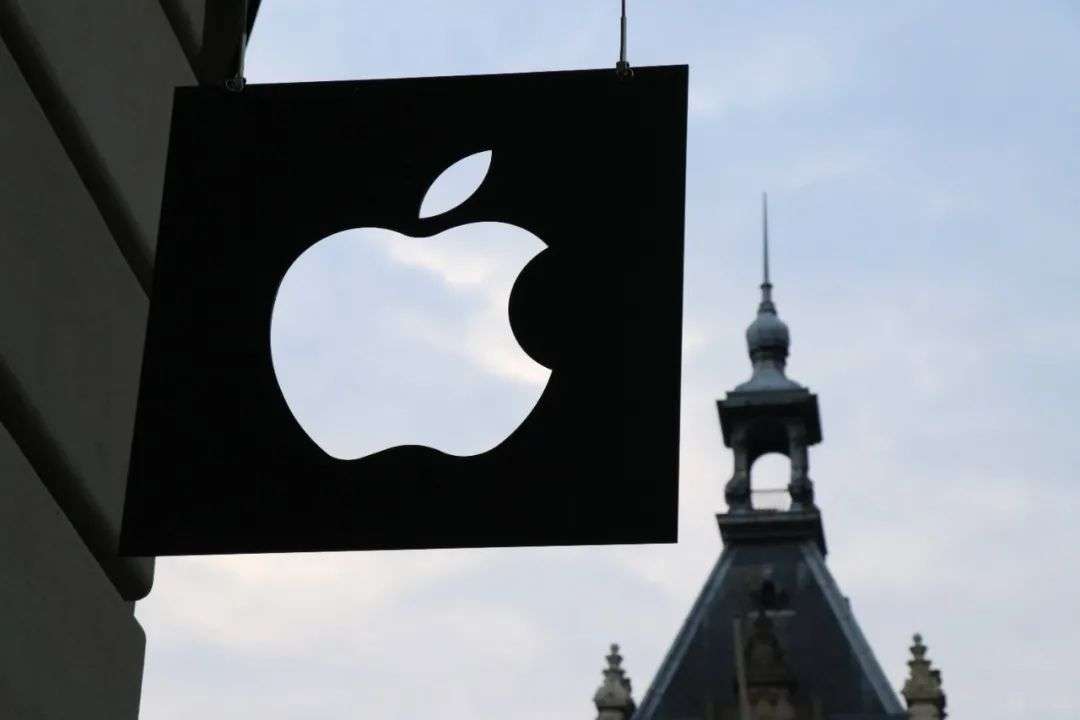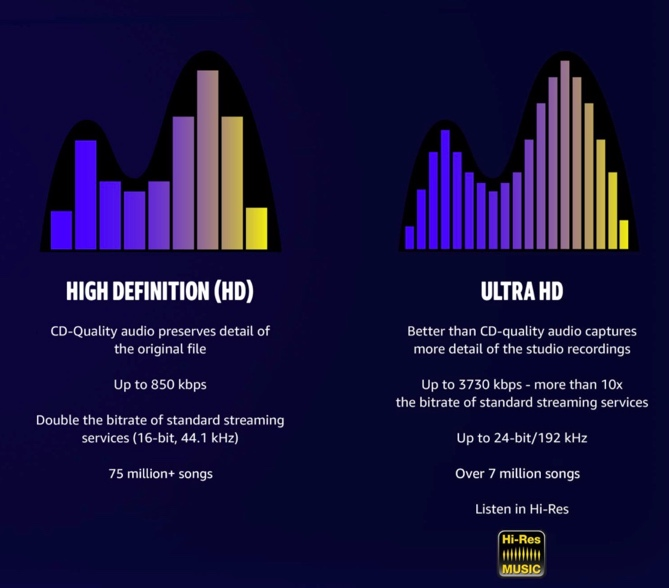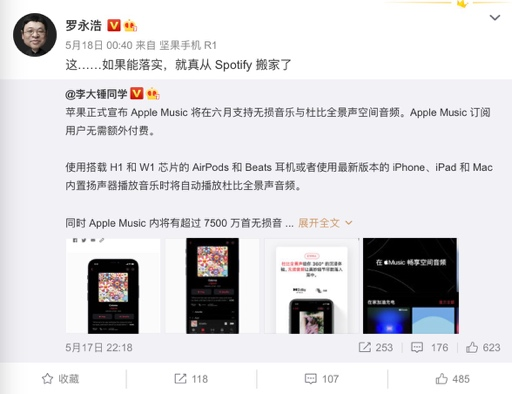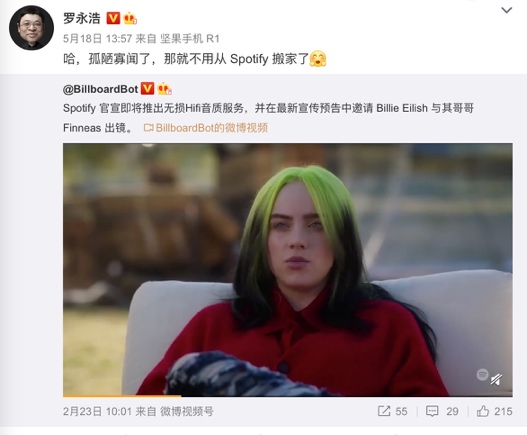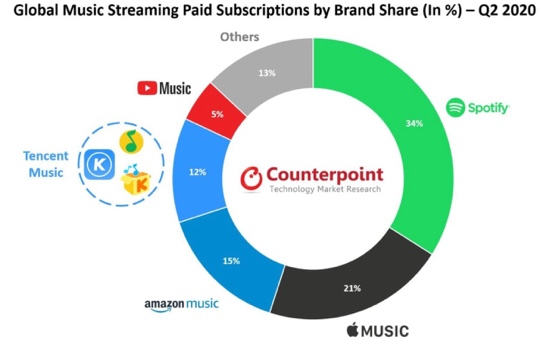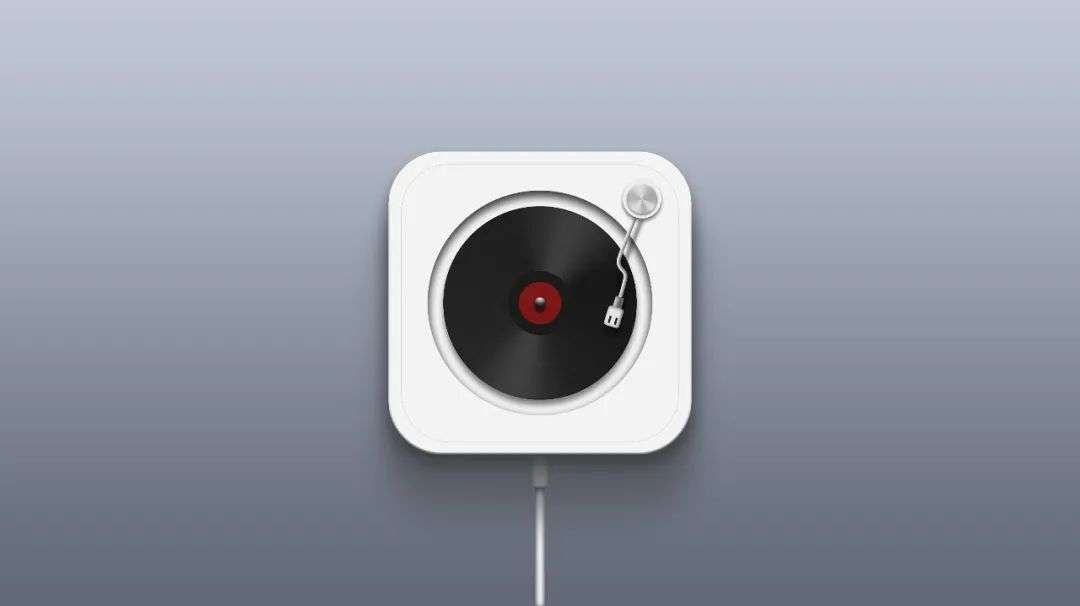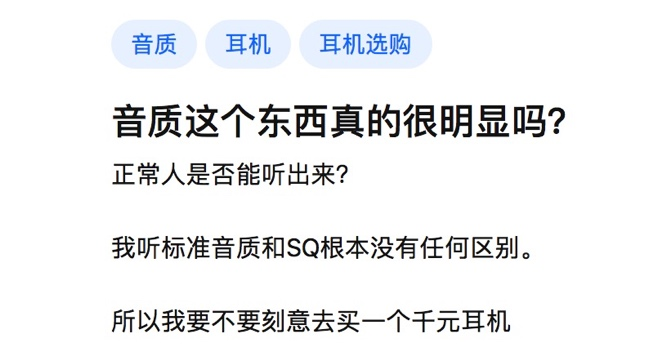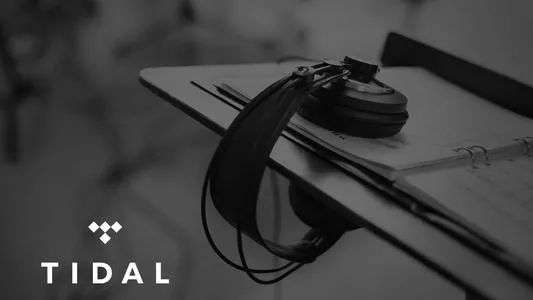It is difficult to go from extravagance to thrift.
Editor’s note: This article is from the WeChat public account “Music First Sound” (ID: nakedmusic), author: Fan Zhihui.
The sound quality upgrade of Apple Music has finally kicked off.
On May 17, Apple announced that Apple Music will launch lossless audio and Dolby Atoms spatial audio. These two services will start in June, and there is no additional charge for subscribers.
“Dolby Atmos gives you a 360° immersive experience, and the lossless audio makes all the wonderful details fall into your ears”, this is Apple Music’s slogan for new features. The spatial audio function of Dolby Atmos allows musicians to display the multi-dimensional and high-definition sound through mixing, while the lossless audio restores the sound when making music in the recording studio.
Apple Music sets the starting point of the lossless level at the CD sound quality, which is 44.1 kHz/16 bit; the higher level of sound quality is 48 kHz/24 bit. These two resolutions can be played in original sound on Apple devices. If you want to listen to high-resolution lossless sound quality up to 192 kHz/24 bit, you need to use an external device, such as a digital-to-analog converter equipped with a USB interface. It is reported that the 75 million songs in the Apple Music library will use the ALAC (Apple Lossless Audio Codec) format to save every byte of the original audio file, but it will take time for all the tracks to be upgraded. The point in time is the end of this year.
Another question that users are concerned about is that since the lossless audio uses the ALAC format, will the AirPods series products using the AAC format miss the chance to enjoy the upgraded music effects? Regarding this question, Apple did not give an official answer. But according to the latest report from AppleInsider, Apple is developing a new lossless audio format, the purpose is to make AirPods series headphones can also play lossless audio. This news rekindled hope for AirPods series users.
Compared to the uncertainty in lossless music listening, AirPods can enjoy Dolby Atmos’ spatial audio function without any problems. Currently, Apple Music’s music library supports Dolby Atmos more than a thousand tracks, covering rock, pop, ancientThe cooperation between Apple and Dolby Laboratories will also help more musicians create works with Dolby Atmos experience.
Apple’s vice president of Apple Music, Beats, and international content, Oliver Schusser, believes that this is the biggest improvement in sound quality of Apple Music so far, and this new action in the field of sound quality will trigger a stream of music. Is the sound quality revolution?
Streaming music giants are also in volume
Following Apple Music’s statement, Amazon immediately announced that it would no longer charge additional fees for Amazon Music HD (high-definition music service).
In other words, Amazon Music Unlimited (Amazon Music Unlimited Users) saves $5 a month, and only costs $9.99 to enjoy the lossless music service that was previously available for $14.99 per month; and Amazon Prime members previously enjoyed a discounted price of US$12.99 per month, this time it has also been adjusted to US$7.99.
For users, this is undoubtedly an unexpected bonus—a library of more than 75 million high-definition songs and more than 7 million ultra-high-definition songs. Amazon’s rapid response comes from its previous accumulation in the high-quality music market.
In 2019, Amazon launched the high-definition music service Amazon Music HD, and promised to provide more than 50 million high-definition songs and millions of ultra-high-definition songs. However, Amazon’s layout in lossless music is not too early. After all, the French music streaming platform Qobuz launched a high-quality download service in 2009, launched a streaming service in 2014, and directly abandoned the MP3 format in 2019. A thorough step has been taken in the upgrade of sound quality. In 2015, music streaming services Deezer and TIDAL also launched high-quality music services.
Lossless music is not new today, but the subscription fee of US$19.99 or US$24.99 is not cheap. Nowadays, the music streaming media giant is also facing “involvement”, the price is low, and there are more choices. The majority of users not only like to see it, but also use their eyes to lock Spotify, waiting to see if the streaming music service giant “follows”.
Spotify has stated its position a long time ago. In February of this year, Spotify held a press conference online,Announced the launch of a CD-level HiFi lossless sound quality subscription plan, but the price has not yet been announced. At that time, the outside world speculated that this plan will be launched at the end of this year, and the price will be higher than Spotify Premium’s $9.99. Now, with Apple and Amazon’s price clarity, Spotify should also reconsider its pricing. Recently, foreign netizens discovered that there is a hidden HiFi icon in the Spotify App. This “dark poke” action is also reminding people that Spotify will have a big move next.
Under this “involved” situation, domestic users are not satisfied with eating melons, and they have turned their attention to the online music platform in their mobile phones.
At present, several major mainstream music platforms, such as QQ Music, Kugou Music, Kuwo Music, and NetEase Cloud Music, all use lossless music as a “privileged” selling point that paid subscribers can enjoy; Migu Music’s high sound quality experience There is also a long period of hard work. Different from the SQ sound quality of other music platforms, its flagship “Ultimate Sound Quality” uses the 24bit sampling depth FLAC lossless format, and the bit rate can reach up to 3000kbps.
However, due to problems such as the confusion of the original sound source, some of the lossless music provided by some music platforms is often complained by enthusiasts as “false lossless”.
There are also platforms dedicated to making “really lossless” music for domestic users. In 2018, Sony China announced in Beijing to launch the high-resolution streaming music service platform “Sony Selected Hi-Res Music”, which can support up to 96kHz/24bit audio streaming media for monthly listening, becoming the first Hi-Res in mainland China Streaming media music service provider, focusing on jazz and classical music, the price for Plus members is 99 yuan/month, and the price for ordinary members is 68 yuan/month. Nowadays, if you want to listen to music on “Sony Selection”, it costs 138 yuan a month. With the high cost, it is not difficult to understand why this App is ranked 78th in the “Music” category of the App Store.
It is worth mentioning that on September 25 last year, the China Audiovisual and Digital Publishing Association formally released the “Technical Requirements for Ultra HD Sound Quality Based on 5G Digital Music”, the country’s first 5The digital music ultra-high-definition sound quality standard in the G era regulates the digital music sound quality standard in the 5G era from many aspects. When sound quality services become the standard configuration of paid music services, it is bound to further stimulate major music platforms to invest heavily in the field of sound quality.
Apple’s goal is not only to surpass Spotify
After Apple’s voice, Luo Yonghao’s “swing” represented the mentality of many users and once again proved one thing: the competition between Apple Music and Spotify has become fiercer.
In the article “From Music Streaming to Podcasting, Apple and Spotify Fighting Head-to-head Again”, we sorted out the confrontation between these two giants in content payment. This time Apple announced the upgrade of sound quality. It is hard to say that Spotify has not been affected by Spotify in February this year. The influence of stance. Apple has to beat Spotify in all aspects if it wants to overtake the car in corners and take the top spot in the streaming music service.
According to the financial report for the first quarter of 2021 released by Spotify, the number of Spotify paid subscribers increased to 158 million, an increase of 3 million from the previous quarter. Although Apple Music lags behind in the number of subscribers, the latter has not given up on catching up.
Apple Music was launched in June 2015. In September 2017, the number of subscribers reached 17 million, when Spotify’s data was 40 million; in April 2018, when the number of Apple Music subscribers exceeded 40 million, Spotify Towards 75 million; when the number of Apple Music subscribers surpassed 60 million, Spotify reached 100 million.
According to data released by Counterpoint Research, global online music streaming subscriptions reached 394 million in the first quarter of 2020, of which Spotify accounted for 30% of streaming media revenue and 33% of subscriptions in the global streaming market. Apple Music Received 25% of streaming revenue and 21% Of subscriptions. It can be calculated that as of the first quarter of 2020, the number of Spotify subscribers has reached 130 million, while Apple Music has more than 82 million subscribers.
According to Goldman Sachs’ forecast, the number of global paid music users will exceed 500 million in 2021, and will easily exceed 1 billion by 2030. In the face of this huge global market, no matter it is the leading Spotify, the closely following Apple Music, or the unwilling to lag behind, no one will easily lose the chain.
Being the first to provide high-quality music to paying users can be seen as an upgrade of Apple Music’s advantages in facing the competition in the music market, and it is also a new consideration for the layout of the music industry. Just like the ridicule, “Apple is a music company.”
Apple’s ambition is not only to surpass Spotify as the leader of streaming music services, but also to become the definition of listening habits in the music field. The pursuit of music streaming and the abandonment of the iPod is a timely move; the cancellation of the 3.5mm headphone jack and the introduction of AirPods are going against the trend.
When digital music was born, the emergence of the MP3 format and the development of mobile playback devices sacrificed the sound quality that the physical record era was proud of. Nowadays, major streaming music platforms are pursuing lossless sound quality, which also makes people feel the reincarnation of the times.
From the beginning of its launch, Apple Music has been insisting on accumulating mastering resources, perhaps just waiting for one day to return to the lossless sound quality market and re-establish industry standards. Compared with lossless sound quality, the adoption of Dolby Atmos may reflect Apple Music’s more far-reaching considerations. Although there are no more than a thousand songs that can achieve Dolby Atmos in the current library, Apple Music is clearly setting its sights on the future.
Music Xiansheng noticed that in the official introduction, Apple Music mentioned that it plans to “double the number of recording studios supporting Dolby technology in the mainstream market”, and then it will work with Dolby to make it easier to use The environment where Dolby Atmos creates songs, provides educational training courses, and provides resources for independent artists, etc.It means that Apple will rely on its channel advantages to further expand to the upstream and downstream of the industry and enhance its ecological service capabilities.
As Apple CEO Cook said, “Apple likes to integrate hardware, software, and services, and find the intersection between them.” Last year, the United States Patent and Trademark Office published an Apple patent related to AR glasses. The patent pointed out A bone conduction audio system. This also explains why Apple values Dolby Atmos so much. In addition to improving the listening experience of Apple Music users at the moment, it is also on the AR/VR track to enhance the experience of virtual reality technology through spatial audio functions.
In the future, when Apple releases AR/VR devices, perhaps we will have a deeper understanding of the ecological gameplay of “hardware, software and services”.
Will people be willing to pay for lossless music?
In “How did Sennheiser become the “Nokia” in the headset circle? “As mentioned in the article, the rapid development of true wireless headsets represented by AirPods has squeezed the living space of HiFi headsets such as Sennheiser. So, when Apple Music embraces lossless music, can the HiFi market usher in the development of new devices?
As a niche hobby, HiFi is known for burning money, but compared to another hobby with the same wealth-photography, the HiFi circle is slightly deserted. Uncle Qiang, a music critic and music enthusiast, believes that the essence of music equipment is to listen to music, and this part of the content is not controlled by HiFi enthusiasts; while photography enthusiasts can control their shooting content. Therefore, there are more people playing HIFi than photography.
Although it is niche, HiFi has embarked on the path of getting out of the circle by metaphysics. For example, the classic joke: The highest level of playing HiFi is not playing power, but playing power grid. The power used by the equipment is different, and the impact on the sound quality is also different-“The high frequency of thermal power is clear, the sound field of wind power is wide, the low frequency of thermal power is strong, and the taste of nuclear power is digital.”
The question is, can our ears tell the difference between different sound qualities? Knowing that netizens “disappointed” quoted foreign experimental data in their answers to related questions, and concluded that the distinction between MP3 and CD sound quality is prominent at a sampling rate of about 128kbps and below, and it is not obvious in MP3 files with a bit rate of 256kpbs and above. difference.
In a sense, the HiFi market wants to usher in new developments, depending on how many people are willing to spend money (or burn money) for music. For many people, they understand the judgment of “sweet treble, accurate mid-range, deep bass”The standard is enough. Since the sound quality is so mysterious and even depends on “brain”, is it necessary to spend time, money and energy to hear the same things as in the studio? Not to mention that 100 pieces of lossless music occupies 1GB of memory space and the fast consumption of data, which also adds more layers of cost to the “consumption upgrade” of lossless sound quality.
“Most listeners actually don’t care about sound quality, and insist on the concept of’people have a permanent fascination with perfect sound quality.’ This is an early sign that the music industry does not understand its consumers.” Stephen Witte’s “Music Is How to Become a Free Lunch”, put forward this point of view.
For the record industry, the emergence of MP3 opened the Pandora’s Box. Compared with the free price, the compression of sound quality has become insignificant. In an interview with “Music Herald”, the translator of this book and freelance writer Mo Mo said that when MP3 first appeared on the market, the recording industry mispredicted the audience’s mentality. Compared with the cost-free network download, Listeners don’t pay much attention to the issue of sound quality, which has also led to the proliferation of pirated music and hurt the healthy development of the music industry. In Momo’s view, lossless sound quality represents the bottom line of the industry. Streaming music platforms provide lossless sound quality, which is a repair to the broken bottom line of the industry.
In Uncle Qiang’s view, lossless sound quality is the future development trend. High-quality streaming music platforms such as Tidal are not only alive, but also well developed. In fact, these “small and beautiful” streaming music platforms have their own philosophy of survival. They don’t compete with big companies and only serve music enthusiasts.
Take Qobuz as an example. In 2020, Qobuz will receive more than $11.7 million in investment in the latest round of financing. This investment will also be used to enhance Qobuz’s international development. And Qobuz also announced on its official website this year that in addition to the 12 countries and regions that have already started business, Qobuz will land in Australia, New Zealand and Sweden, Denmark, Norway and Finland in Northern Europe from April 15.
According to the “Music First Sound” survey on the music of the young generation Z around them, most of them will give priority to the highest quality lossless/SQ sound quality, but the prerequisite for membership is copyright. In other words, even thoughSound quality is not as important as it can attract users to pay, but at least it is a good trend.
Conclusion
In addition to the vast number of subscribers eagerly waiting for the arrival of June, domestic manufacturers engaged in the production of “little tail” (decoding amp line) also hope to get a bonus. However, for Apple, which is good at the next big game, it is likely that it will launch its own device next.
Whether it has been complained of “chicken ribs” or “money money”, or praised as “welfare”, the effect of Apple Music’s sound quality upgrade work will still need time to give an answer. For users, what kind of sound quality to listen to music is just a choice, which is the icing on the cake.
But since ancient times, it has been difficult to change from extravagance to frugality. For Apple and other streaming music services, they are destined to have no turning back when they embark on the road of competition for higher-quality music.
